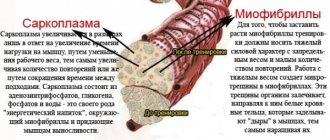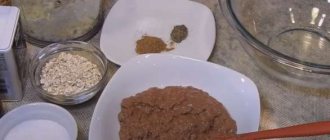The period from November to April accounts for about 95% of cases of rotavirus infection in children and adults. It is most difficult for children under 5 years of age. Their body is characterized by low acidity of the gastric juice produced and the lack of the ability to actively resist viral infections. The rotavirus got its name from the characteristic shape of the vibrio, which looks like a wheel with a well-defined rim (translated from Latin, rota means “wheel”).
How to distinguish rotavirus?
The name “intestinal flu” has been assigned to rotavirus infection. This is explained by the similarity of its symptoms with the flu: both begin acutely, with a sharp increase in temperature to 39°. But the infection, which is not related to influenza viruses, is also characterized by dysfunction of the digestive system. Therefore, typical symptoms of rotavirus are:
- diarrhea;
- nausea and vomiting;
- pain in the navel and above;
- characteristic “rumbling” in the stomach.
A sick baby becomes lethargic, irritable and loses interest even in his favorite food. Vomiting, diarrhea and fever are accompanied by other diseases. Parents need to remember that the consequence of rotavirus infection is particularly severe diarrhea - with diarrhea up to 20 times a day for 3-5 days. At first, the stool has a mushy appearance and a yellowish tint, but gradually becomes more watery and discolored.
How do you get infected with rotavirus?
Absolutely all children are susceptible to infection. The likelihood of infection is not affected by the level of hygiene and type of behavior of the baby, or the quality of food and water. Rotavirus is extremely contagious, belongs to the “dirty hands” category and is transmitted through the oral-fecal route. Children, as a rule, become infected from adults, who usually suffer from a mild form of the disease, in most cases not even paying attention to a mild, quickly passing bowel disorder. For babies after six months, actively crawling on the floor and grabbing all surrounding objects with their hands, it costs nothing to catch an infection.
Once in the body, the virus settles in the cells of the mucous membrane of the small intestine and stomach, causing inflammation - enteritis, gastroenteritis. Typical symptoms of the disease are explained by the destruction of epithelial villi and disruption of the production of enzymes necessary for the digestion of food.
After recovery, rotavirus does not leave any unpleasant consequences in children. However, for weakened children it can become very dangerous. Therefore, at the first suspicion of “intestinal flu,” the child should be shown to a good paid pediatrician.
How dangerous is rotavirus infection for children under 5 years of age?
The incubation period of rotavirus is short, only 1–4 days. Therefore, viruses very quickly destroy the normal functioning of the intestines, forcing it to pump out water and microelements from the baby’s body - in particular, potassium and magnesium, which are necessary for the normal functioning of the heart. This leads to a rapid increase in weakness.
To recover and reduce the symptoms of intoxication, the child must drink plenty of fluids and replenish lost minerals. But at the same time you have to drink literally 50 ml, since taking the same rehydron in large volumes can provoke vomiting. High temperature also significantly worsens the condition of the baby.
Rotavirus infection: how to treat and how to avoid getting infected?
Rotavirus infection is an increasingly common infectious disease that most parents face. However, not everyone knows about the treatment of their child.
GMS Clinic pediatrician Anastasia Vartomyants-Chupryakova told the Healthy Children information portal why rotavirus is dangerous, how to treat it, and whether there are methods of prevention.
Anastasia, what is Rotavirus?
This is an intestinal infection caused by a virus of the Reovirus family. Infection occurs due to rotavirus entering the oral mucosa; the virus penetrates further into the digestive tract and begins to multiply in the small intestine, causing adverse consequences.
Rotavirus has eight types, but a person can become infected with only three of them, and the disease progresses in exactly the same way. The most common type of infection in our country is rotavirus A.
Rotavirus infection is characterized by seasonality; the virus is active in high humidity and is resistant to low and high temperatures. Most often, children get sick in the winter-spring and autumn-winter periods.
What symptoms are characteristic of rotavirus infection?
An acute onset is typical - vomiting, loose stools, abdominal pain, fever.
How is the disease transmitted?
Through dirty hands, the infection enters the mouth, that is, through the fecal-oral route. Rotavirus is not transmitted by airborne droplets.
At what age are children most susceptible to the disease?
Until the age of five, almost every child gets sick with rotavirus at least once in their life, to one degree or another. This infection affects all age groups of the population.
How does mass infection of children occur at school?
Children do not follow simple rules of personal hygiene - they do not wash their hands after visiting the toilet. Then there is a handshake, games, they ate an apple, shared an apple with a friend, took a bite of a friend’s chocolate, and so on. This is how the infection spreads.
How dangerous is rotavirus?
The main danger is loss of fluid. Dehydration and intoxication lead to disruption of body functions.
How long after infection do symptoms appear?
The incubation period ranges from several hours to several days. Most often, symptoms appear on the first or second day.
How long does the acute period of the disease last?
This is individual for each case. Most often - from three to five days. The first three days are the most severe course of the disease.
What to do if your child has a high temperature?
If the temperature is higher than 38.5 °C, then it must be brought down with antipyretic agents. If vomiting predominates, rectal suppositories are better; if diarrhea syndrome predominates, oral suspension is better. The drugs of choice may be paracetamol and ibuprofen.
Is there a special danger for small children under one year old?
As I already said, we are afraid of fluid loss; accordingly, the smaller the person, the less fluid is in his body. If the child vomits repeatedly and has copious loose stools, the child will quickly become dehydrated. Therefore, in severe cases - definitely a hospital.
Is it possible to treat the disease on your own?
At the first symptoms of the disease, you need to contact a doctor so that he can examine the child, do the necessary tests and prescribe the correct treatment. Before being examined by a doctor, you need to start giving your child water in small portions. You should not treat your child on your own.
Is it necessary to feed a child before a doctor prescribes treatment?
When sick with rotavirus infection, children most often refuse to eat, as vomiting predominates. But if a child asks for food, then it should be food that is not fatty and does not contain a lot of fiber. Rice porridge is perfect because it fixes the stool and acts as a sorbent.
It is popularly accepted to give children Regidron when they are sick with rotavirus. Is it necessary to do this?
Regidron is a saline solution, it is a medicine. Only the doctor decides whether to take it or not.
Is it possible to carry out treatment at home?
It all depends on the severity of the disease. If the form is mild, treatment can be carried out at home. If the disease is moderate or severe, go to the hospital. In any case, this is determined by the doctor.
What should you do if a child in your class has many cases of the disease?
It is necessary to explain to the child that it is very important to observe the rules of personal hygiene.
What precautions should be taken in the apartment if a child is sick?
In this case, it is also necessary to observe hygiene rules. If vomit or feces get on the surface, this area must be treated with disinfectants. Wash your hands more often.
What should be the restorative therapy after the main symptoms of the disease have subsided?
Compliance with an elimination diet (from the English Elimination - exception, elimination - is a diet with the exclusion of certain foods from the diet) - it is necessary to temporarily exclude fatty foods and foods with a high fiber content, as well as foods that cause intestinal laxity, from the diet, with a gradual expansion of the diet .
What is the prevention of this disease?
Prevention - compliance with personal hygiene rules and vaccination. Vaccination is carried out for children under 32 weeks of age, that is, in infancy. This is the Rotatek vaccine. There is also a second vaccine - Rotarix - it is given up to 24 weeks. If a child is vaccinated at this age, the vaccine will protect against the disease; if at a later age, then vaccination will no longer have a positive effect. During illness, vaccination will also not bring results.
Source: healthy-kids.ru
Treatment of rotavirus in children
There are no specialized pharmaceuticals for the treatment of rotavirus infection. Treatment should be aimed at compensating for the mineral salts and fluids lost by the body so that the cardiovascular and urinary systems are not damaged. In order not to risk the child’s health (especially if a child under 2 years old is sick), it is best to call a doctor at home. A good pediatrician will confirm or refute the diagnosis, give adequate recommendations and monitor the baby’s condition so that the disease does not lead to undesirable consequences.
How can you get infected?
Main routes of transmission:
- food - eating unwashed vegetables or fruits;
- aqueous - drinking liquids contaminated with a virus;
- contact-household - use of contaminated dishes and household items; unwashed hands.
Airborne transmission is not typical for intestinal infections.
Pandemic. Virus
unsplash.com
A person infected with the virus is contagious during the acute phase of the disease and for the next 48 hours. That is, although he feels completely healthy, he remains dangerous to others.
How to treat rotavirus?
Fasting, drinking and absorbents.
- The intestines and stomach need a food break, which should last at least 4-6 hours, and in severe cases - up to a day. After about 3–4 days, if the dynamics are positive, nutrition can be gradually restored without overusing carbohydrates and plant fiber. Even when things are getting better, there is no need to give milk (due to temporary lactose deficiency), raw fruits and vegetables, potatoes, or sweets for 8–10 days.
- When treating rotavirus in children under one year of age, they should be fed breast milk or formula as usual, but the portion should be reduced by half.
- During the food break, the baby must be constantly fed with saline solutions to avoid dehydration. The ready-made solution is purchased at the pharmacy, but it can also be prepared at home: per liter of boiled water - half a teaspoon of salt and 2 tablespoons of sugar. You can also drink weak tea, fruit juice, dried fruit compote.
- The sorbents approved for children are activated carbon (1 gram of carbon per 1 kg of weight), smecta, enterosgel.
Self-administration of antibiotics is strictly prohibited. Not only are they not designed to treat viral infections, but they also seriously change the composition of the intestinal microflora.
How many days does rotavirus last?
In most children, with proper therapy, vomiting goes away within a day, and abdominal pain and diarrhea persist for 3–7 days. The immune system of the body receiving support begins to produce immunoglobulin A, which helps fight viral infection. But even on days 12–15 from the onset of the disease, the intestines are not yet cleared of viruses. Therefore, a child who is already feeling relatively well continues to remain dangerous to others for about 4 weeks.
To prevent other family members from getting sick, it is necessary to observe basic hygiene standards: wash your hands, boil children’s dishes and cutlery, and do not forget about wet cleaning of the apartment. At the end of the disease, a certain amount of antibodies will be formed in the body, which will help transfer the rotavirus much easier the next time.
Prevention of rotavirus infection
Specific prevention (vaccine) has not been developed in Russia (vaccines against rotavirus infection are available in the USA and some European countries). In this regard, general preventive measures coincide with those for other intestinal infections and additional measures to prevent the spread of infections by airborne droplets.
Natural waters and tap water can be contaminated with rotavirus; it is believed that this is one of the main reasons for the increase in incidence. Boiling water is required!
Personal hygiene is mandatory: washing hands before eating, after going outside, before preparing food. Wash fruits thoroughly with hot water.
Rotavirus is washed off and neutralized with toilet and laundry soap and washing powders. And a simple practical recommendation: when going outside, lubricate your nasal passages with soap - this is more effective than wearing a mask on the subway! If there is a sick person in the family, then it is necessary to isolate him for 10-15 days, and the apartment must be wet cleaned.










